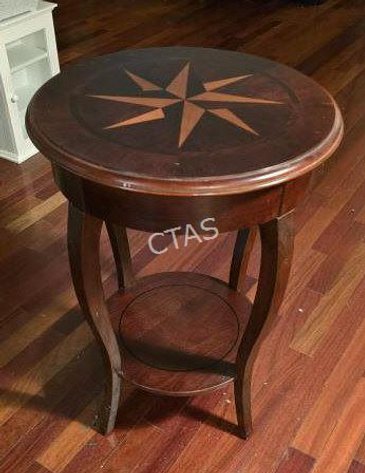Auction Procedure
What is an Auction?
An auction is a process of buying and selling items by offering them up for bid, taking bids, then selling them to the highest bidder. Typically, the items in an auction are sold over the course of several hours. You don’t necessarily have to stay for the entire auction if there’s only one or two items you’re interested in. In fact, you can even place an absentee bid or have a staff member call so you can place bids over the phone from the comfort of your own home! You also have plenty of opportunity before the auction starts to preview, in person, the items being sold, and we highly recommend that you preview everything before you bid!
What is the purpose of an Auction?
There are many reasons why items are auctioned. It might be an entire household from an estate where the owners need to sell the items quickly in order to prepare the home for sale. It might be a business where the owner is retiring and needs to close out by a set date. In many cases, an auction is the most suitable format because it offers a means to quickly sell a lot of goods over a short period of time.
The Auction Process
All auctions have a preview period, which may occur the day before the auction and/or in the hours leading up to the start of the auction. This gives everyone a chance to look around at what’s for sale, check an item’s condition and make notes on what to bid on. The preview times will appear in our auction schedule. While you are at the preview, you can reserve a seat and register for the auction in advance if you wish.
When buyers arrive at the auction they will “register”. For regulars, this just means saying “hello” at the front desk and picking up their bidder card (a white card with a number on it). Newcomers will need to supply their address, phone number and driver’s license number. Once this information is recorded, the buyer will also get a bidder card. Once the auction starts, the bidders sit or stand in view of the auctioneer as items are brought up one by one to be sold.
Placing Bids on Items
For any particular item, the auctioneer will briefly describe the item that’s about to to be sold and start the bidding at a price he or she thinks is a reasonable opening bid. If there are no takers right away, the auctioneer will try a lower opening bid. If more than one hand goes up in the audience, the auctioneer will choose one of them and say for example, “I have five dollars over here. Do I hear ten?” (the auctioneer decides the bidding increments). At this point things can become fast paced. The auctioneer will points to each in turn saying, “ten… fifteen dollars… twenty… thirty dollars… forty…” When hands start to go down as a few of these early starters have reached the maximum amount they’re willing to pay, the auctioneer starts speaking at a rapid-fire pace. This is a tradition known as the “Auction Chant”: “Forty, now fifty, now fifty, now fifty, do I hear fifty?” Translated he is saying “I have a bid of $40.00. Does anyone want to offer $50?”. He repeats this a couple of times. Another hand goes up across the room. The auctioneer doesn’t see the hand go up straight away, but one of the assistants, known as a “ringer”, does spot it and shouts “YES!”, pointing toward the bidder. This draws the auctioneer’s attention to the new bidder. “Fifty, now sixty, now sixty, now sixty, who’ll give me sixty… Fifty, now sixty, now sixty, now sixty, who’ll give me sixty… [short pause] Fifty, now sixty??? [short pause] Fifty, now sixty???”. At this point you can hear a rising inflection in the auctioneer’s voice. This is a cue that bidding is about to close, so if anyone else is still interested in the item they’ll have to get in quick! No more hands go up. “Fifty, now sixty??? [pause] SOLD for fifty dollars. Bidder number…”. At this moment the winning bidder holds up their bidder number so the auctioneer can see it. “Bidder number 27… Bidder number 27… Next item!” That’s how a single item is sold at an auction. All of the above happens in 2 minutes or less and the process repeats several hundred times until everything is sold.
When bidding, there are a couple of important things to keep in mind:
1) The auctioneer’s call is final. That means if you were not paying attention and try to place your bid after the auctioneer says “SOLD”, or in rare cases where the auctioneer & ringers don’t catch your bid – Sorry, you are out of luck! This situation is easily avoided by making sure to pay close attention when your item comes up and holding your bidder card up clearly so the auctioneer can see it. Make a loud noise if you don’t think the auctioneer has your bid!
2) If you win the bid, you become the legal owner of the item and ownership transfers to you immediately. An invoice is generated and you will need to pay for any items you’ve won before leaving for the night. In most auctions, the smaller items you have won will be placed in a secure area where you’ll need to show your paid receipt to pick up. If items are handed to you instead, then you are responsible for keeping an eye on your item to ensure it doesn’t get damaged and no one else walks away with it. If it’s a small to medium sized item, it’s a good idea to collect it and bring it back to your seat. Larger items are usually moved to the loading area or left in place on the auction floor with your bidder number on the item. Once again, you will usually need your paid receipt to collect your items.
Auction Lots
There are a couple of variations on the standard bidding procedure outlined above that you need to be aware of. Occasionally items will come up where you are bidding on a “lot” of items. “Lot” simply means “more than one”. One term you’ll see often in auction listings is “tray lots” or “box lots.” To help keep things organized, small items from the same seller are often grouped together on plastic trays or in boxes. For example a tray carrying 7 necklaces, all coming from the same seller is considered a “lot”. Before the auctioneer starts the bidding for a “lot”, he or she will decide on how the lot is going to be sold and explain what exactly your bid will get you. It’s important to listen carefully at this point! Your bid might buy you the entire lot, in which case the auctioneer might say something like, “You’re buying all 7 necklaces for one money” or “On the pair of vases, lets start the bidding at $10”. In this case, the amount you bid is the total amount you pay for all 7 of those necklaces (or for both of those vases).
Auction Choice Lots
Another way lots are sold is on a “choice” basis. Let’s use the necklace example again. The auctioneer starts with “Now bidding on your choice of the necklaces…” Bidding continues as normal. Let’s say you win the bid at $10. This means that you have bid $10 on one necklace on the tray. A helper will bring the tray lot up to you and you decide that you want 2 of the necklaces. The helper shouts to the auctioneer “Bidder number 27 takes 2!”. When you leave you’ll pay $20 ($10 each) for the 2 necklaces. Now there are 5 necklaces left on the tray and they go up for bid again. You can even bid again if you want. Since you took the best necklaces already, the remaining ones might sell at a lower price. There might be one more round of “your choice” followed by selling all of the remaining necklaces for “one money”.
Auction Times the Money Lot
Sometimes when a lot is sold, the auctioneer will specify that all of the items in the lot will be sold for your bid amount multiplied by the number of items in the lot. Using the necklaces example again, the auctioneer might say “On the necklaces, 7 times the money”. Let’s say you win the bid at $10. You are now the proud owner of 7 necklaces for a total of $70. This is commonly done with items such as dining room chairs, where you are bidding on one item but your bid gets multiplied by the number of items.
The Buyer’s Premium
Many auction companies charge the buyer a 10-20% “buyer’s premium” to purchase at the auction. This charge is pretty historic and allows the company to offer a reasonable commission rate to the seller, thereby helping ensure good quality merchandise for offer to the buyer. Since many auction companies operate on a shoestring budget, often costs of credit card transactions are passed along to the buyer as well. On-line auctions with Internet bidding often charge a higher buyer’s premium as well, as many more costs are involved. Bottom line, always pay by cash or check when possible to pay the minimum buyer’s premium.











